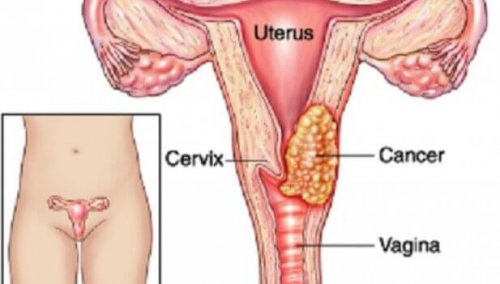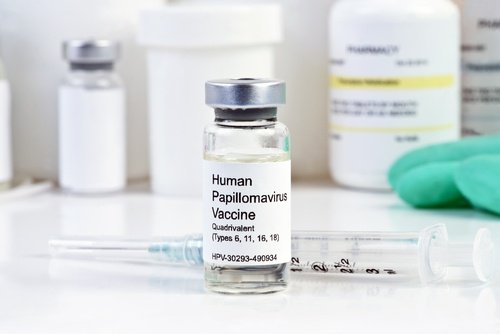These 7 Factors May Lead To Cervical Cancer

Cervical cancer affects woman everywhere. It’s caused by an abnormal growth of cells in the cervix which form tumors that become malignant.
Despite modern medicine’s ability to detect and treat this form of cancer, it remains the fourth leading cause of death among women ages 30 to 59.
The majority of cases are directly linked to the Human Papillomavirus (HPV); however, other causes have been studied.
Because so many people are unaware, we want to share these 7 factors that experts have linked with the development of cervical cancer. Let’s take a look together!
Factors that lead to cervical cancer
1. Human Papiloma Virus (HPV)

98% of the precancerous lesions that develop into cervical cancer could have some sort of link with certain types of the Human Papillomavirus.
Men are carriers of the virus and transmit it to women during sexual relations.
So far, one of the most effective methods to prevent infection is getting a vaccine. The vaccine is for people between the ages of 9 and 45 in three doses.
See also:
22 Foods that Prevent Cancer
2. Having sex at an earlier age
Becoming sexually active at an earlier age can be detrimental to a woman’s health because the uterus is not yet fully developed, making it more susceptible to viruses and other diseases.
Sex education at an early age is key to recognizing this type of risk and other consequences that can affect a woman’s health.
3. Tobacco use

Women who smoke daily have risk of developing cervical cancer four times higher than those not exposed to tobacco.
This is due to the noxious substances in tobacco that accelerate the growth of cells that become cancerous.
4. Prolonged use of oral contraceptives
Although the risks are minimal due to all that advancements that have been made in oral contraceptives, using them for more than 5 years in a row increases your risk of this type of cancer.
Please note that this is only a small possibility, it’s mainly caused by HPV.
5. Leading a sedentary lifestyle

Women who are overweight and lead a sedentary lifestyle are more likely to suffer from this disease in adulthood.
A sedentary lifestyle causes circulation problems and increases the risk of contracting an infection.
On top of that, the excess fat and toxins increase the growth of tumor cells, making things even worse.
6. Chlamydia infection
Chlamydia is a common bacteria that can infect the female reproductive system. It’s transmitted through sexual contact and is one cause of infertility, as the infection inflames the pelvic region and this can affect fertility.
After a blood analysis, researchers found that women who have or had a chlamydia infection have a higher risk of cervical cancer than those who never did.
In most cases, infected women don’t present any conclusive symptoms. Doctors use a pelvic exam to detect infections.
You should read:
7. A family history of the disease

As with other types of cancers, cervical cancer can be due to genetic factors.
Women with a family history of cervical cancer are two to three times more likely to develop the disease than those without one.
Several experts suspect that the tendency to develop cervical cancers in families is due to a hereditary condition that makes the immune system less able to fight HPV.
Going in for a test regularly is the best way to prevent this disease.
Vaginal smears (Pap smears) and HPV testing are key to early detection.
All cited sources were thoroughly reviewed by our team to ensure their quality, reliability, currency, and validity. The bibliography of this article was considered reliable and of academic or scientific accuracy.
- MedlinePlus. Cáncer de cuello uterino. https://medlineplus.gov/spanish/cervicalcancer.html
- American Cancer Society. Estadísticas importantes sobre el cáncer de cuello uterino. https://www.cancer.org/es/cancer/cancer-de-cuello-uterino/acerca/estadisticas-clave.html
- American Cancer Society. Factores de riesgo para el cáncer de cuello uterino. https://www.cancer.org/es/cancer/cancer-de-cuello-uterino/causas-riesgos-prevencion/factores-de-riesgo.html
- Sociedad Española de Epidemología. VIRUS DELPAPILOMAHUMANO YCÁNCER:EPIDEMIOLOGÍA Y PREVENCIÓN. https://www.seepidemiologia.es/documents/dummy/4monografiaVirusPapilomaYCancer.pdf
- Revista Cubana de Ginecología y Obstetricia 2014;40(1):68-78. Infección por Chlamydia trachomatis como cofactor en la etiología del cáncer cervical. http://scielo.sld.cu/pdf/gin/v40n1/gin08114.pdf
- Lancet. 2007 Nov 10;370(9599):1609-21. Cervical cancer and hormonal contraceptives: collaborative reanalysis of individual data for 16,573 women with cervical cancer and 35,509 women without cervical cancer from 24 epidemiological studies. https://www.ncbi.nlm.nih.gov/pubmed/17993361
This text is provided for informational purposes only and does not replace consultation with a professional. If in doubt, consult your specialist.








